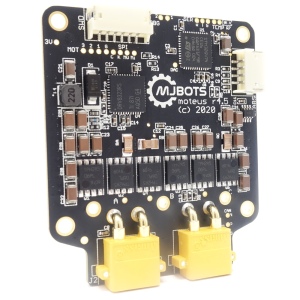Native moteus tools for Windows
To date, all of the development tools for the moteus brushless controller have been available exclusively for Linux based operating systems. I’ve been doing some behind the scenes work, and have gotten to the point where moteus_tool now runs natively on windows and can communicate with moteus controllers using a fdcanusb.
Check out the Windows installer for the latest release:
To make this work, I started from the excellent grailbio/bazel-toolchain, which provides LLVM toolchains for Linux based systems based on the official LLVM pre-compiled binaries. I forked that into mjbots/bazel-toolchain and added Windows support. It isn’t perfect, because the LLVM project only distributes Windows binaries in installer form, and it isn’t possible to extract binaries from them without specialized tooling. So, this version relies on a manually re-packed compressed archive of all the executables.

